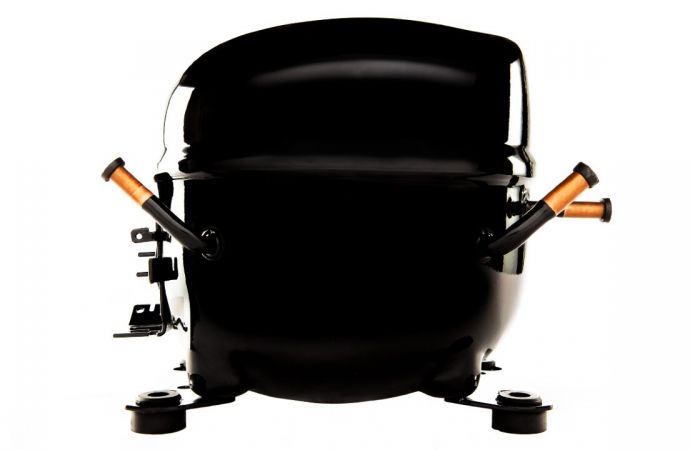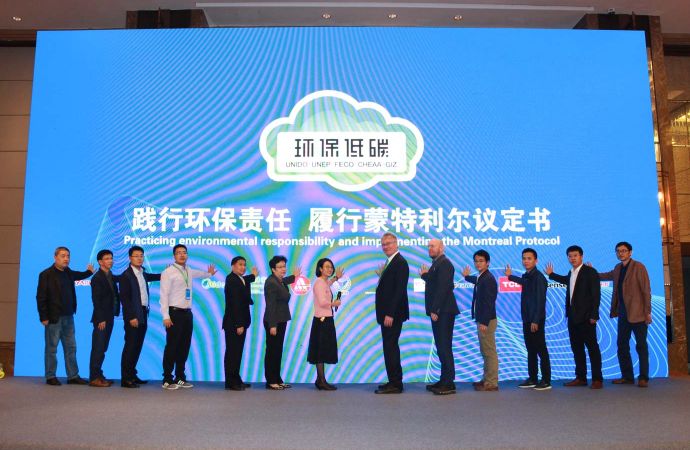Questions were asked at ATMO America on how the advent of online shopping would change the market for natural refrigerants in commercial refrigeration.

Andre Patenaude addresses ATMOsphere America in Long Beach, California.
With traditional food retailers facing competition from big online shopping players like Amazon (which recently acquired Whole Foods) and an increase in the popularity among consumers of shopping online, participants at this week’s ATMOsphere America 2018 conference wanted know how the commercial refrigeration industry would adapt.
Answering questions asked about online shopping on day one of the conference – taking place in Long Beach, California from 12-14 June – Andre Patenaude, director – food retail, growth strategy at Emerson Commercial & Residential Solutions, explained at ATMO America: “You will find North American retailers trying to compete with [big online] companies. [This has led to] a lot of e-commerce happening and diverts [from] other areas. [Retailers are] scaling down stores.”
“Now 32% of U.S. retailers have ‘click and collect’,” he said, raising the question of how to put natural refrigerant-based HVAC&R systems into these smaller stores.
Smaller stores, Patenaude noted, mean different refrigeration needs.
In Europe there are a multitude of natural refrigerant-based solutions available to meet demand from small stores, such as CO2 mini-boosters, CO2 condensing units and hydrocarbon-based light commercial refrigeration systems, but this is yet to translate into the U.S. market, according to Álvaro de Oña, COO of shecco (the organiser of ATMOsphere events and publisher of this website).
NatRefs making inroads into light commercial
Emerson’s Patenaude and Embraco’s application engineer John Prall explained that their companies have solutions to meet the demand for natural-refrigerant based refrigeration systems in light commercial sector, with good progress already having been made in rolling them out.
“30% of the market has already transitioned to R290,” Prall said.
Scott Martin, director of business development and industry relations at Hillphoenix, said the company offered “self-contained and integral lines of hydrocarbon systems,” and also made CO2 mini-boosters and condensing units available thanks to its European subsidiary Advansor.
Controlling energy costs could be a cost-effective way to encourage retailers to compete online and improve sustainability by employing natural-refrigerant solutions, argued Emerson’s Patenaude. “It’s not just about controlling refrigeration equipment, but all energy equipment,” he said.
Hillphoenix’s Martin highlighted the key role played by manufacturers and installers in communicating to end users the importance of looking beyond the initial cost of the system to consider total cost of ownership.
This means demonstrating to end users the installation, energy and servicing costs of using natural refrigerant-based systems, according to Martin.
Heat recovery could be one way of reducing costs. Asked if it were possible to implement heat recovery in convenience stores, Martin of Hillphoenix replied that, “even with HFC technologies, they have deployed air/water [heating technologies]. Natural refrigerant-based systems can also do this”.
Adding heat recovery
Marc-André Lesmerises, president of Canada-based Carnot Refrigeration, said his company had been successful in employing this in the commercial refrigeration space so far. “Of the more than 250 [CO2 transcritical] systems we have [installed in the U.S. and Canada], 90% have heat recovery capability,” Lesmerises said.
A further point retailers should keep in mind, according to Hillphoenix’s Martin, is the HFC phasedown. Martin noted that regardless of policy uncertainty in the United States, retrofitting an old system can mean big costs for end users if they need to replace the refrigerant.
“There’s a 50-60,000 dollar price tag to convert from one refrigerant to the next,” he said. “Look across to Europe and see what has happened there [under the new European F-Gas Regulation].”
“[Non-natural] refrigerants now last [just] five years [and are a] big expense for the customer,” Martin said.
Related stories



